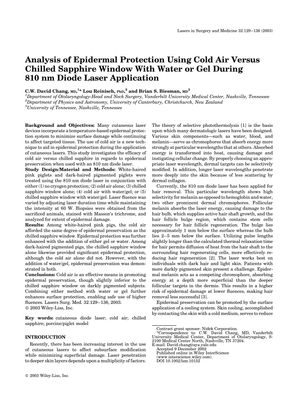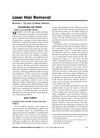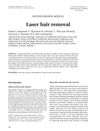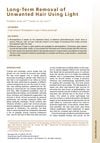Analysis of Epidermal Protection Using Cold Air Versus Chilled Sapphire Window with Water or Gel During 810 nm Diode Laser Application
January 2003
in “
Lasers in Surgery and Medicine
”

TLDR Cold air and a chilled sapphire window both protect the skin during laser treatments, and work better with water or gel, especially for darker skin.
In a 2003 study, the effectiveness of cold air and a chilled sapphire window, with and without water or gel, was compared for protecting the epidermis during 810 nm diode laser treatments on piglets. The piglets were categorized by skin pigmentation, resembling human Fitzpatrick skin types I and III/IV. For white-haired pink piglets (type I), both cold air and the chilled sapphire window provided similar levels of protection, which was enhanced with water or gel. For dark-haired pigmented piglets (type III/IV), the chilled sapphire window was more effective than cold air alone, but when water or gel was added, both methods were equally effective. The study concluded that cold air can be an effective epidermal protection method, particularly when used with water or gel, although it is slightly less effective than the chilled sapphire window for darker skin types. The Midpoint Epidermal Laser Tolerance (MELT) values indicated that the addition of water or gel increased the effectiveness of both cooling methods, suggesting that higher laser fluences could be used safely with these cooling techniques.





